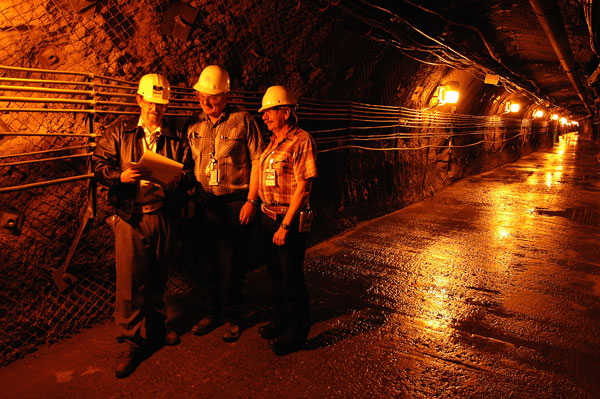Historians speaker series kicks off with discussion of nuclear weapons development and testing

Los Alamos National Laboratory Senior Historian Alan Carr kicked off a new speaker series tailored to staff at the Nuclear Security Enterprise and Atomic Weapons Establishment. The first presentation, hosted and recorded by AWE, drew more than 900 participants. Carr discussed the history of nuclear weapons development and testing in the U.S. and U.K. His presentation focused on above-ground, atmospheric testing and underground testing, from the Trinity test of July 16, 1945, in New Mexico, to Julin-Divider, the nation’s most recent test, in Nevada. Sandians can view a recording of the presentation.
Carr’s presentation was inspired by an article that he recently authored: “Of Clouds and Craters: The Incredible Story of U.S. Nuclear Weapons Testing.” It was published in the last fall in the U.S. Army’s Countering WMD Journal.
Carr used historical knowledge and humor to describe nuclear development through decades of atmospheric and below-ground testing with a focus on why, where and how the U.S. performed each test. Peter Kuran contributed photos and videos from the archives on the Atom Central website.
Many NSE and AWE employees were born a generation after the Cold War ended, so sharing this information is important education for staff at all sites and provides context for their work in nuclear history.
Rebecca said that NSE and AWE sites rarely discuss their unique history and contributions with each other.
“The origins of all of these places and their various activities is just sort of falling away. I think you can easily work at one of the U.S. sites and not even be aware that the other sites exist,” she said.
Next lesson
“We historians have been planning since last fall. We were hoping to meet in person last year, but that got squashed, of course. So, someone floated the idea of online talks, and it evolved into this series of UUR talks on various topics, made available to all the Nuclear Security Enterprise and AWE sites,” said Rebecca. “It took some time to get the technology sorted, as not all sites use the same online communication tools. Plus, we wanted to allow for large viewership.”
The series will continue in September, when historian Katie Braughton discusses cell and bay testing at Pantex during the 1950s and 1960s. Future talks feature Tom Ramos of Lawrence Livermore National Laboratory, AWE’s Richard Moore and Savannah River Site’s Geoff Netzley.